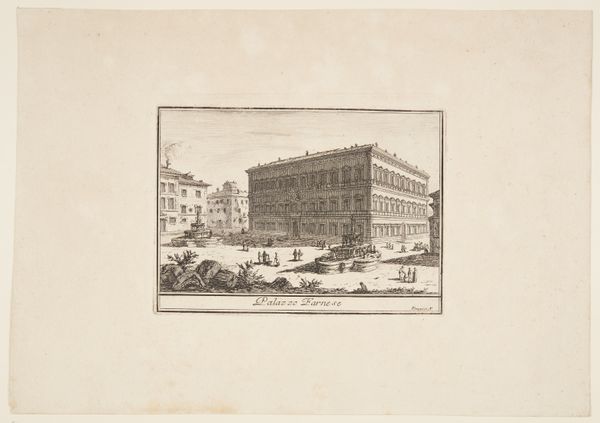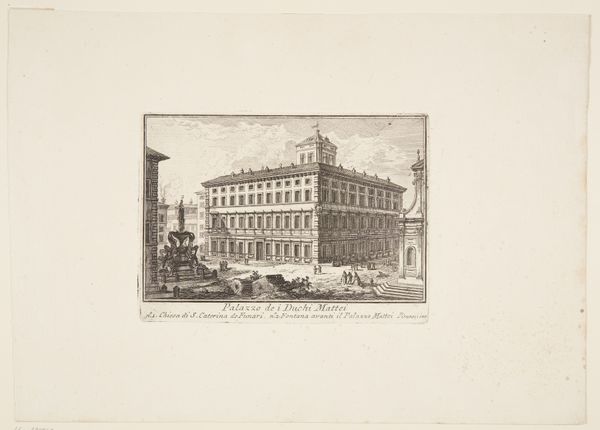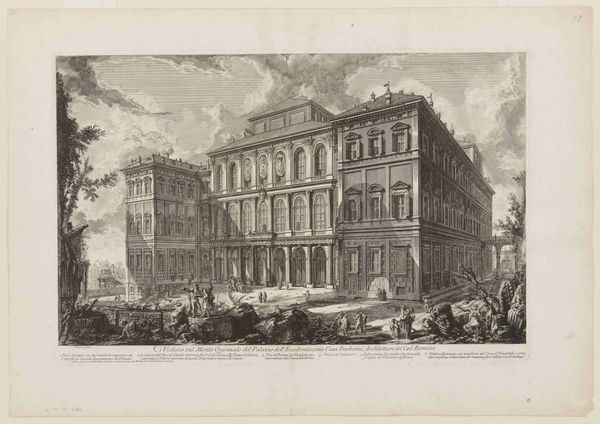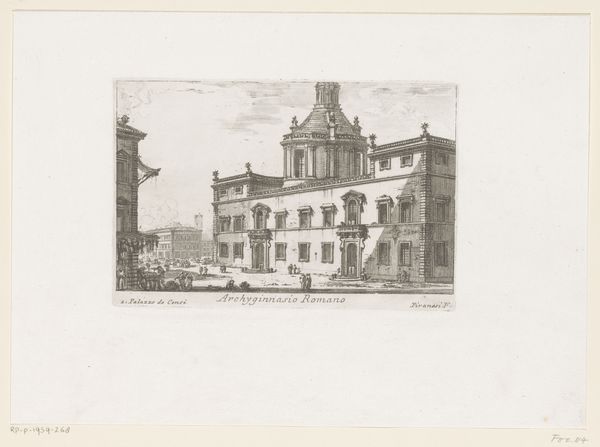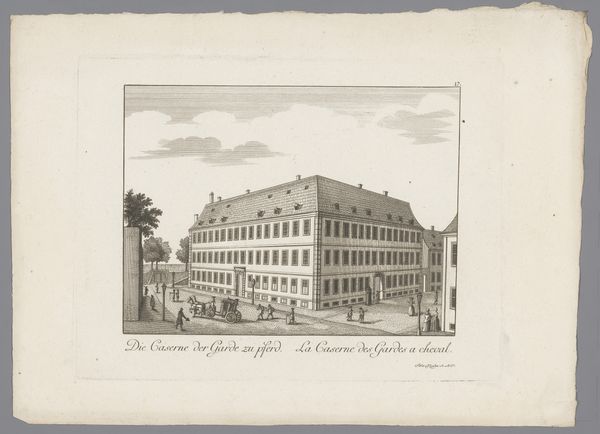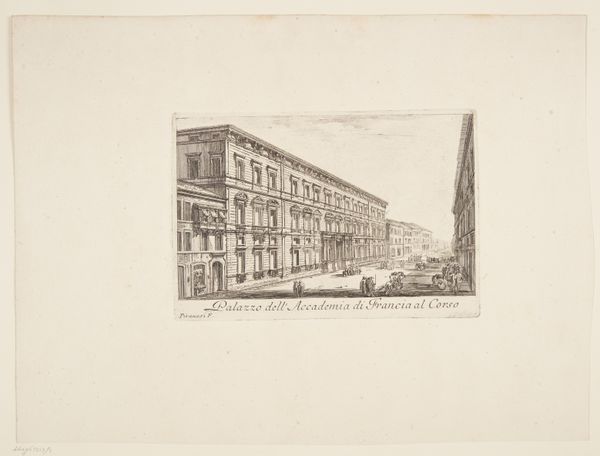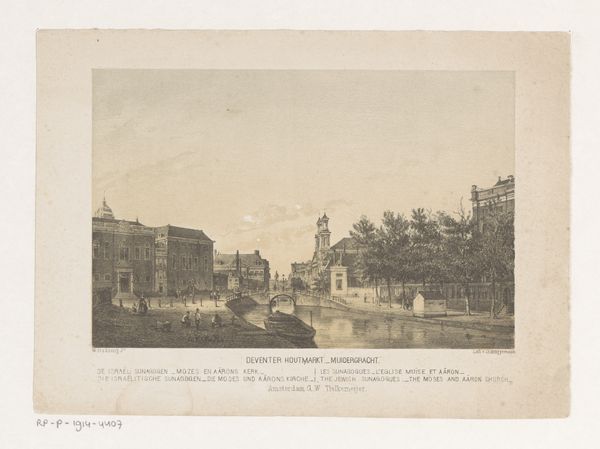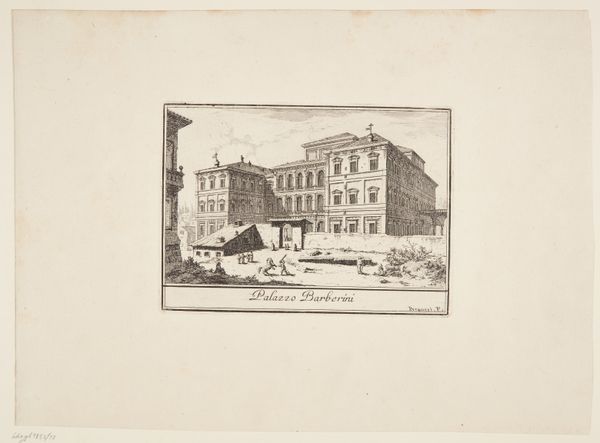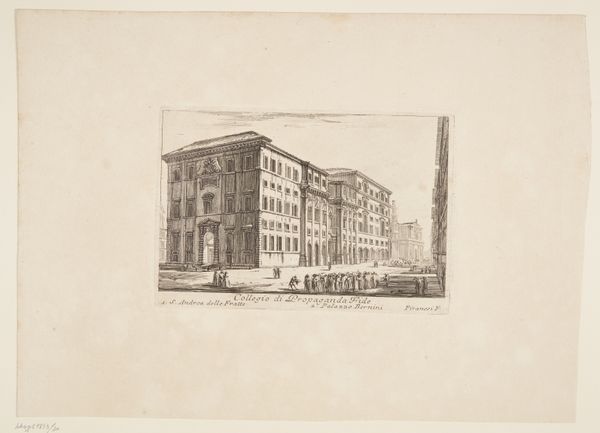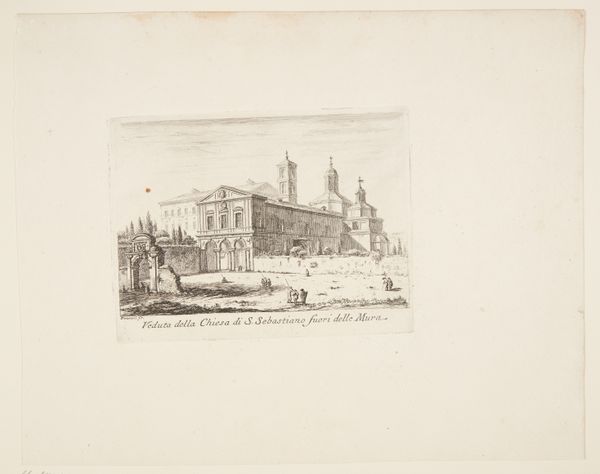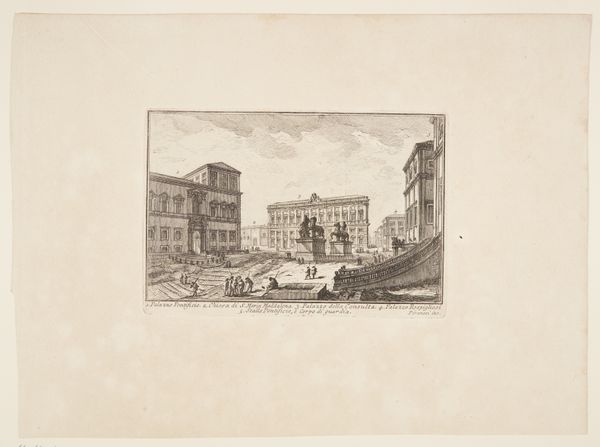
drawing, print, etching, paper, ink
#
drawing
#
neoclacissism
# print
#
etching
#
landscape
#
etching
#
paper
#
ink
#
cityscape
Dimensions: sheet: 10 3/16 x 14 1/4 in. (25.8 x 36.2 cm)
Copyright: Public Domain
Curator: This is a cityscape titled "View of Naples: Museo Borbonio." It's an etching made with ink on paper, placing its creation sometime in the 19th century. The piece currently resides here at the Metropolitan Museum of Art. Editor: My first thought is of formality and classical order. It’s serene, balanced...almost sterile. The figures, though present, seem more like adornments, don’t they? What stories do these facades hold, do you think? Curator: Well, if we consider the method, an etching on paper suggests accessibility through reproduction. Prints like these circulated widely, shaping perceptions of places like Naples for those who might never visit. The very act of creating this cityscape involved labour, production costs, and a distribution network. Editor: That's true, yet the crisp lines and precise depiction of the architecture speak to a particular reverence. Think of the symbolic weight of Neoclassicism! The museum, framed by grand facades and even grander ideals, served as a locus for civic pride and cultural authority, certainly. The building represents order, reason and a connection to a glorious past. Curator: I see your point. Neoclassicism intended that connection, but remember who commissioned and consumed such images. Were they accessible to everyone? Or were they mainly enjoyed within certain economic strata? We should also consider the etching process itself; the decisions around line, shadow, and depth influenced not only the aesthetics but also the production costs. More detail required more labour. Editor: Fair enough, and speaking of detail, notice how the artist meticulously rendered carriages and people – all carefully placed within the composition. What are their purposes within the cultural narrative? It's clearly designed to be uplifting and suggestive of enlightenment principles embodied by this institution. Curator: Agreed. This perspective emphasizes progress and societal achievement but also potentially veils other social and economic realities in Naples at the time. Was it just the elites who benefited from what was inside this Museo Borbonio? What about all of those living and toiling nearby? Editor: These symbols always have multi-layered meanings, haven’t they? This piece really illustrates how Neoclassicism sought to forge a link to an idealized past. This makes me appreciate the power and intent behind this 19th-century print. Curator: Absolutely! And considering it as an object brings home that even aesthetic choices, like those crisp lines and calculated shadows, have material underpinnings and consequences for those who produce and consume the artwork.
Comments
No comments
Be the first to comment and join the conversation on the ultimate creative platform.
